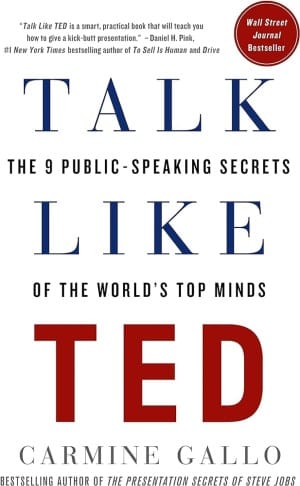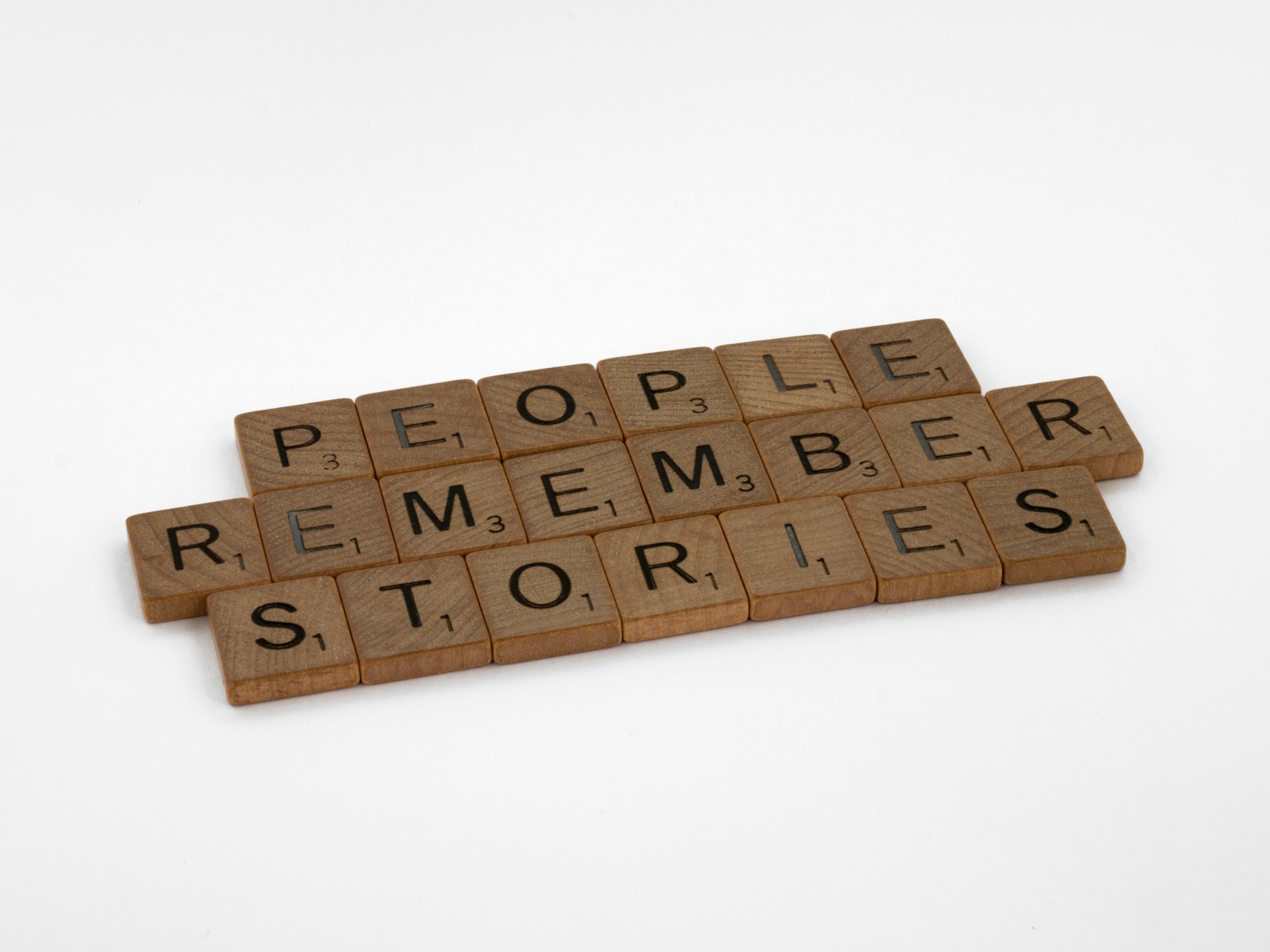Talk Like TED: 9 Public Speaking Secrets
This is your go-to "too long, didn't read" post about Carmine Gallo's book "Talk Like Ted." A medical/pharmacy application of these tips is included!

Today we are going to review another book that really spoke to me. So much so that I feel I have to share what I learned. Lucky for you, this article will be a brief 10,000 foot overview of the 9 "secrets" Gallo discusses in his book.
Why should you take time to learn these 9 public speaking secrets?
- Reviewing the 9-secrets will take ~maybe~ one minute of your time.
- Going in depth for each secret will take about 5 minutes of your time.
- Public speaking might seem scary to you, and these secrets can help you feel more confident about delivering a fantastic presentation!
- Or public speaking may be a walk in the park for you, but there is always room for improvement.

Carmine Gallo breaks the book up into parts that place each secret into three buckets: emotional, novel, and memorable.

I encourage you to review the above graphic prior to diving into the body of this article. Read over each secret and think about what each one may be referencing/recommending in terms of public speaking. Once you have a good grasp on the 9 secrets, continue to see if what you thought lines up with what Gallo discusses.
Throughout the 9 sections below, I will use a pharmacy-specific example scenario to help you understand how each secret can be executed in your next presentation.
The 9 Secrets, explained
#1 Unleash the Master Within
What makes someone a "master" at something? From various books I have recently read, a master is someone who dedicates thousands of hours to a topic or task. To do this, you must have a definite purpose, passion, and a desire to know more. Unless you are inspired on a topic through your own passion, you will never be able to inspire others. You should strive to find a topic you are passionate about, form a significant, unbreakable connection to that topic, and radiate that emotion (naturally) to your audience.
Example Part 1: MR's Presentation
MR is a fourth year pharmacy student on an APPE rotation. MR has to give a presentation during their final week. The preceptor gave MR two options:
- Present on Diabetic Foot Infection
- Present on Congestive Heart Failure
MR has never been a fan of infectious diseases. This was one of their most difficult therapeutics courses to pass in school. MR does have a family history of CHF. Their grandfather passed away from advanced-CHF and MR's father was recently diagnosed with CHF. MR enjoyed the cardiology therapeutics course and has been an advocate for preventing CHF with lifestyle modifications and medication management throughout their school and volunteering.
Which topic do you think MR chose to present on? CHF of course! It is obvious that MR has a connection to the disease state. Their passion and previous indirect experience with CHF will help them unleash the master within.

#2 Master the Art of Storytelling
Through your passion and emotional journey on your chosen topic or task, you are bound to experience several "moments" or stories along the way. Use these stories in your presentation. Storytelling has shown to stimulate and engage human brains. Through a passionate and thought-provoking story, you will hold the audience captive. In this day and age, holding someone's attention span for longer than 15 seconds is quite the task. Share a story that will draw them in to your presentation.
Part 2: MR's Presentation
As mentioned earlier, MR has seen CHF take their grandfather and creep into their dad's life. MR will be able to use both these experiences to share their story. Through the story, the audience will be held captive while learning how devastating CHF can be for a patient and their loved ones. Maybe an audience member has a similar story. This will help strengthen the connection and engagement of the audience.
#3 Have a Conversation
This tip may not feel natural to you, and that is okay. I think it took me until the end of my PGY1 residency to feel comfortable with my tone, speed, gestures, and eye contact in a presentation. These four attributes can provide the "conversational" and "relaxed" presentation style we are looking to achieve.
Often, students are nervous and speed through their presentation. Even if there are no other signs of nervousness, a quick-paced speaking rate will be noticed by the audience. Practice slowing down (but not too much. We don't want to put anyone to sleep) and pausing between each slide of the presentation. For tone, think about giving the presentation to your loved one or best friend: make it natural. Don't think you need to yell or have unnatural voice inflictions for certain words. Just be you!
Gestures can vary depending on the presentation space. Are you seated? Behind a podium? Standing in the middle of a room? Tucked in the corner? Virtual?
Part 3: MR's Presentation
MR knows they are a nervous speaker and tends to speak quickly. MR asked their preceptor what the set-up for the presentation. MR learned they would be in front of a room behind a podium. This helped ease MR's mind. During their practice sessions in their bedroom at home, MR practiced deep breathing and speaking from the heart to their friends and family. This helped MR find a more conversational-tone for their presentation.

#4 Teach Me Something New
What draws you into a continuing education presentation or voluntary lecture? The title, of course, but also the novelty of the information! The presentations I go out of my way to attend, or the YouTube videos I tend to click on, contain a topic that I am not familiar with or knowledgeable about! I want the presenter or video maker to teach me something new. So, that is what you need to do in your next presentation!
It may be difficult to do as a student considering you are often presenting on run-of-the-mill topics such as Atrial Fibrillation or COPD. That is why preceptors encourage (or require) you to find a Journal Club article within the past 6-months or to present on an interesting case patient with a more intriguing disease state. They want you to find a topic that will not only teach you something new, but also the seasoned pharmacists and providers in the health system! You are much more likely to capture a big audience AND their attention spans by presenting information they are not already familiar with.
Part 4: MR's Presentation
MR learned a TON during their research for the CHF presentation. However, they wanted to make sure the content provided value to the expected audience. MR asked their preceptor what they might like to see included and also who the audience was going to be. The preceptor mentioned there was a recent update to the Heart Failure (HF) Guidelines and also some recent studies regarding SGLT2 inhibitors and their use in HF. The preceptor also shared that pharmacists, students, and a few physicians would be in attendance. MR and their preceptor agreed including these recent updates and trials would increase the likelihood that every audience member would learn something new come presentation day!
#5 Deliver Jaw-Dropping Moments
The example used in the book is too good to not share here.
Do you remember what you were doing on September 11, 2001? What about September 11, 2002? If I had to guess, you remember quite clearly what that day in 2001 looked like, but not so much in 2002. Special moments are unforgettable. If there are moments during your presentation, your audience will be more likely to remember your talk and share your talk with friends.
One could accomplish this by building up suspense throughout the presentation or leaving the audience with multiple cliff hangers in the story, to then reveal the final moment/ending in a "jaw-dropping" manner.
Or, relevant to the medical community, use the prevalence/incidence information on your disease state to create a more memorable moment. Here are two examples from popular TED talks:
- “In 1972, more than 300,000 people were incarcerated and imprisoned. Today the number is 2.3 million. The United States currently has the highest prison incarceration rate in the world” (Bryan Stevenson)
- “One in 100 people has a mental illness. There are 1,500 people in this room right now, so 15 of you are mentally ill.” (Jon Ronson)
Part 5: MR's Presentation
For MR's presentation, they plan to ask the audience where they were and what they were doing on two specifics dates. MR is assuming the audience will ponder the dates, but not be able to specifically recall anything (maybe one or both of the dates will resonate with a few people, this will help add to the moment).
The two dates MR chose are near and dear to her: the moment they were told their grandfather passed from CHF and the date their father was diagnosed with CHF.
The mundanity of the dates to the audience combined with the severity of these two dates to MR will deliver a jaw-dropping moment that will bond the audience to MR and help connect everyone in the room together.

#6 Lighten Up
Everyone likes comedy shows, right? When executed correctly, humor in a presentation can make a positive impact, lower the audiences' defenses, and make your message better received. It is best to avoid hurtful humorous remarks on others to attempt to get a chuckle from the audience. Remember, this is a professional presentation, and humor needs to be added intelligently and with purpose.
You do not have to include a textbook-definition joke to add humor to a presentation. If you do go the joke route, make sure it is in good taste and appropriately timed, otherwise, you are likely better off to fore-go humor all together.
A few ways to slip some humor into your presentation may be to share a story that happened to you as you were creating this presentation or on your way to work that morning. Maybe you spilled coffee on yourself, stepped in a puddle, and arrived 10 minutes late due to traffic. Relate this to how the universe seems to be against you today and you therefore set your expectations low for this presentation because that is the trajectory of your morning thus far. "So strap in folks, this will be the worst presentation of your life! Thanks, Universe."
Or perhaps you can slide in a comparison or metaphor. "Amazing how all of us doctors and pharmacists gather here today to learn more evidence-based medicine to better our patient care plans, only to have our patients listen to Dr. Google more than they listen to our recommendations."
Remember, it isn't about making every audience member audibly laugh. A simple giggle or cracked smile will do the trick.
Part 6: MR's Presentation
Although it may be in MR's best interest to add a little humor into their presentation considering they are opening with the fight their family has had with CHF, MR isn't a naturally funny individual. They know this. In addition, MR felt that switching from a serious tone to a funny tone too quickly would send confusing messages and lose the audience. Ultimately, MR chose to omit humor in their CHF presentation, but will consider this tactic in future presentations.
#7 Stick to the 18-Minute Rule
If you have a time limit, you better stick to it. Nothing makes the audience more frustrated (and likely to zone out) than 1) rambling and 2) presenting over the allotted time.
Why 18 minutes? It has been shown that we can absorb information in smaller chunks. Such as a 3 hour lecture broken into three 50-minute lectures instead. Or an hour presentation whittled down to a 15-20 minute presentation. By doing so, you are taking out the "fluff" of the topic and hammering home (hopefully) about 3 main points. Humans love the number three, and it is easier for us to remember 3 ideas rather than 7 or 8.
This can be difficult for medical presentations, as we often are giving 60-minute continuing education presentations, but here are the key points to remember when you go to draft your next presentation:
- What is the most important message I want my audience to take away today?
- What are two or three arguments to support that message?
- What details help capture/represent each argument?
Part 7: MR's Presentation
MR was told by their preceptor to keep their presentation around 45-50 minutes. The total time slot allocated for the presentation is 60 minutes, but the preceptor wants time at the end for the audience to ask MR questions.
To make sure MR had a good outline and stayed on track, they answered the three questions above:
1. Most important message: Most heart failure deaths are preventable
2. Three arguments to support:
- Medication therapy
- Lifestyle habits
- Patient adherence
3. Details for those arguments:
- Medication therapy: recent data, landmark trials, morbidity/mortality data, updated guidelines
- Lifestyle habits: metabolic syndrome, risk factors, etiology of heart failure, updated guidelines
- Patient adherence: grandfather was not the most adherent patient, medications only work if you take them, motivational interviewing, since father's diagnosis his values have improved due to good adherence and lifestyle changes
#8 Paint a Mental Picture with Multi-sensory Experiences
This secret encompasses audience engagement and active learning, in my opinion. By creating a picture in the audience's mind or using techniques to pull in the audience's senses (taste, smell, sight, touch, sound), you are drawing them into the presentation. They have to actively connect their senses to your information. This will help solidify the learning points in their mind and hold their attention!
Adding in images or the occasional video is one way to execute this public speaking "secret." If you add an image, try to make it an image that you talk through and not leave it un-referenced as filler on your slides. The audience will have to listen to your words as you explain the image and examine (with their eyes) the image to follow along with your explanation.
Another example that came to mind for us medical folks is a presentation on diabetes. A common aspect of patient care when managing diabetes is 1) finger pricks to monitor blood glucose throughout the day and 2) carb counting/food choices. A few multi-sensory experiences come to mind.
- You could provide the audience with a clothes pin to place on their finger at the beginning of the presentation. This would give the audience a sense of soreness/pain that would simulate what a patient's finger may feel like throughout the day after several pricks for blood glucose monitoring. (Note: don't provide the audience with actual needles as then there would be contaminated needles everywhere. Try to AVOID body fluid exposure at all costs).
- Provide the audience with a piece of candy. Have them taste it and notice how sweet and addicting it is. Then have them try a small carrot or other vegetable. This will engage their taste-sense and also help them realize how difficult it can be for some patient's to adjust their eating habits from sweet/processed foods to whole foods.
Part 8: MR's Presentation
MR remembers their grandfather frequently experiencing shortness of breath (dyspnea), especially at rest during the later stages of his disease. To help engage the audience, MR is going to bring a pack of drinking straws to their presentation. Each member of the audience will be instructed to hold the straw up to their mouth and try to breathe only through that straw. This will simulate what severe CHF patients experience. This exercise will also help connect the audience to the topic, engage active learning, and hold the audience's attention moving forward.

#9 Stay in Your Lane
This secret is short and sweet: be yourself, focus on the topic you are presenting, and don't like to mimic or be someone you are not. The audience will be able to tell if you are bluffing. Especially your preceptor! They know your true you. If you get up to present and are a completely new person, they will be focused more on your personality change than the content of your presentation.
It is great to have mentors and role models but remember: there is only one YOU and the world wants to see that! Speak your passion! (closing the loop all the way back to Secret 1 wink wink)
Part 9: MR's Presentation
Thinking back on secrets 1 and 3, MR has the passion behind this topic and has practiced calmly themselves down and having a more "conversational" presentation. This will help them stay true to themselves and their story.
MR also recognizes that they are a pharmacy student, not a physician. With physicians in attendance, MR was prepped by their preceptor about the potential questions the physicians might ask. The physicians are the diagnosing experts and will likely ask questions that are more specific or out of the scope of MR's presentation/knowledge base. This is okay! MR knows they can offer to follow-up with the physician after further research and to be open to any information the physicians want to add after they finish their slides.
Wrapping it all up...
Wow. I really enjoyed breaking this book down for you! I especially found benefit in relating each secret to a pharmacy presentation! I hope you found benefit as well. Take these 9 tips and go crush your next presentation!
Which secret did you appreciate the most? Comment down below!
*Information presented on RxTeach does not represent the opinion of any specific company, organization, or team other than the authors themselves. No patient-provider relationship is created.

